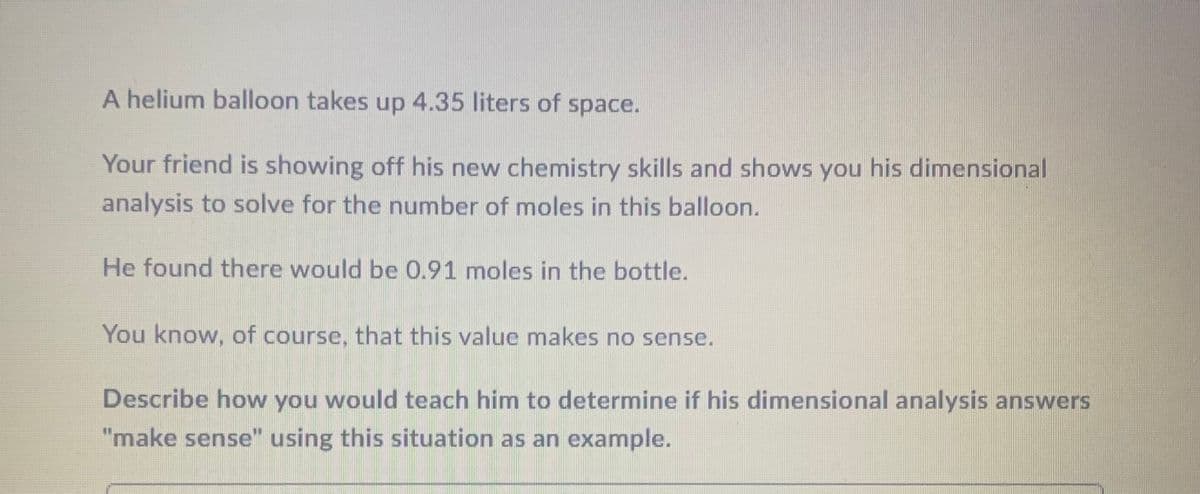A helium balloon takes up 4.35 liters of space. Your friend is showing off his new chemistry skills and shows you his dimensional analysis to solve for the number of moles in this balloon. He found there would be 0.91 moles in the bottle. You know, of course, that this value makes no sense. Describe how you would teach him to determine if his dimensional analysis answers "make sense" using this situation as an example.
Step 2: Identify the dimensions of the quantities involved
The second step is to identify the dimensions of the quantities involved in the problem. For example, if the problem involves distance, time, and velocity, the dimensions of these quantities would be length, time, and length/time, respectively.
Step 3: Check if the units cancel out
The third step is to check if the units cancel out. To do this, multiply the quantities together and check if the units cancel out, leaving only the desired unit. For example, if you are trying to find the velocity of an object and you know its distance and time, you can multiply distance by time to get velocity. If the units cancel out, you have a physically meaningful result.

Trending now
This is a popular solution!
Step by step
Solved in 3 steps







